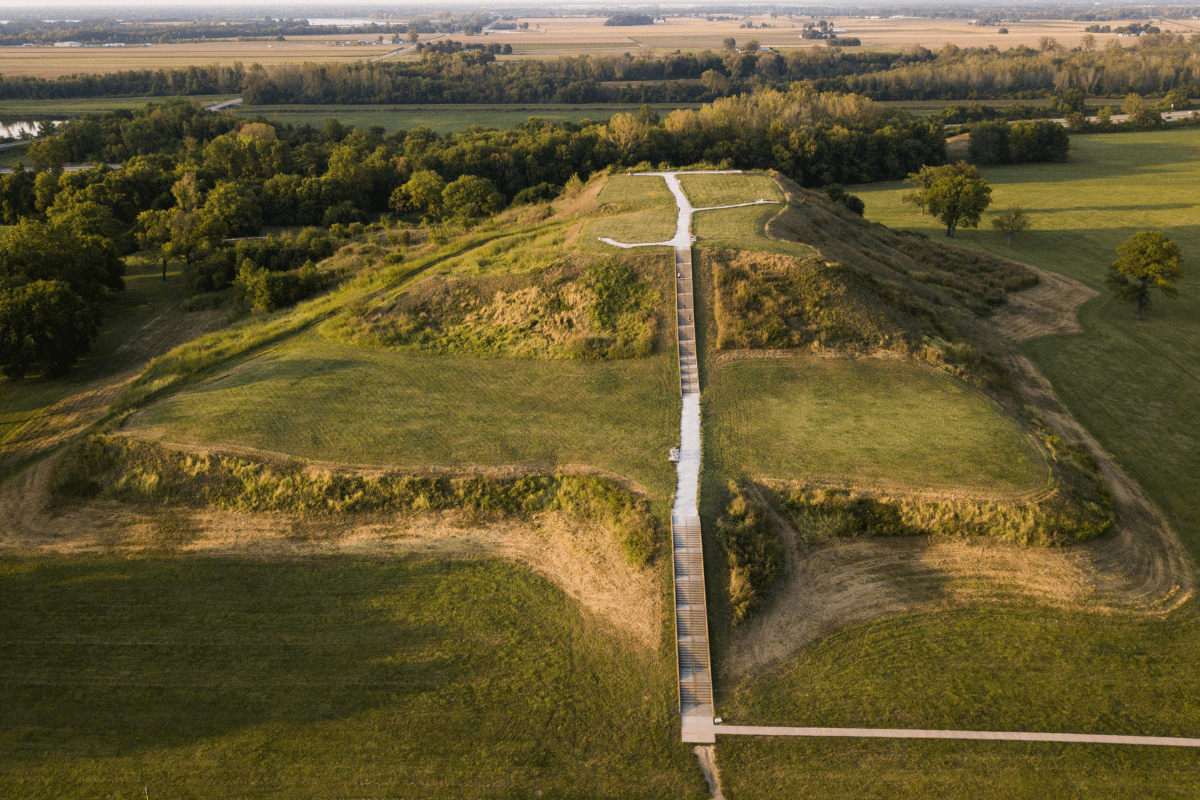Look, I'll be honest with you… Illinois doesn't exactly scream "fishing paradise" when most folks think about it. But after spending way too many weekends getting my lines tangled in everything from Lake Michigan piers to abandoned strip mine ponds, I can tell you this flat state hides some seriously good fishing. Whether you're dodging tourists at Navy Pier or hiking into the middle of nowhere in southern Illinois, there's probably a fish with your name on it somewhere in the Prairie State's 184 species.
Where the big ones actually live
Let me save you some gas money and disappointment right off the bat. If you want consistent action with legitimate trophy potential, you need to know where to start.
Rend Lake: The southern Illinois giant
Down in southern Illinois, about 15 miles south of Mt. Vernon, sits Rend Lake's massive 20,633 acres of fishing potential. This place is basically channel catfish heaven… the Illinois Department of Natural Resources rated the catfish fishing as "excellent" for 2025, and they're not exaggerating. Most of the channels run 1 to 3.5 pounds, which means you'll actually catch dinner instead of just feeding the turtles.
The crappie fishing here is what really gets people excited though. About 17% of the crappie exceed 10 inches, which might not sound impressive until you realize how many undersized dinks you usually catch elsewhere. Spring is money time for slabs, especially when water temps hit that magic 56-degree mark between March and early May.
You've got 10 different boat ramps to choose from, including Wayne Fitzgerald State Recreation Area, so finding a spot shouldn't be an issue even on busy weekends. Just remember the special regs here: you can keep 25 crappie daily but only 10 over 10 inches. And before you ask, yes, that's actually a good problem to have.
Chain O'Lakes: Northern Illinois' best-kept secret
Okay, calling the Chain O'Lakes system a "secret" might be stretching it since it covers 7,110 acres about 50 miles northwest of Chicago. But most city folks still don't realize what's swimming around up there. This interconnected system of nine lakes regularly kicks out 10-pound walleyes, and the muskie fishing… well, let's just say 48-inchers aren't exactly rare.
The walleye bite really turns on in April-May and again in September-October. Jigs tipped with minnows or trolled crankbaits at 10 to 20 feet will put fish in the boat. For the toothy critters, break out the big spinnerbaits and bucktails, and don't forget to figure-8 at the boat. I've seen more muskies eat on the eight than on the initial retrieve.
Fair warning: you'll need a Fox Waterway Agency sticker for your boat on top of your regular registration. Also, the walleye regulations are a bit funky with a protected slot from 18 to 24 inches, and you can only keep one over 24. But honestly, throwing back those prime spawners is why the fishing stays good.
Lake Michigan: It's not just for boats anymore
Sure, everyone knows about Lake Michigan salmon fishing, but you don't need a $50,000 boat to get in on the action. From April through October, chinook salmon up to 30-plus pounds cruise within casting distance of shore, especially during fall spawning runs.
Here's the deal that nobody talks about openly: from October 1 through December 31, snagging is actually legal at designated spots like Lincoln Park and Jackson Park. It's not exactly sporting, but if you want to fill a freezer with salmon… just saying.
For those who prefer their fishing a bit more traditional, yellow perch provide fantastic action from piers and breakwalls. Small jigs or softshell crayfish at 12 to 20 feet deep produce limits regularly, except during the May 1 to June 15 closure for spawning.
Central Illinois: Where hybrids and saugeye rule
The middle of the state might look like nothing but corn and soybeans, but hidden among those fields are some absolute gems.
Evergreen Lake: The saugeye factory
About 15 miles north of Bloomington sits Evergreen Lake, home to the state record saugeye at 9 pounds, 10.88 ounces. They stock 40,000 saugeye and 925 muskellunge annually here, so your odds are actually pretty decent.
The 10-horsepower limit keeps the wakeboard crowd away, which is perfect for fishing. Saugeye bite year-round but go absolutely nuts during spring and fall. Troll crankbaits or drift jigs tipped with minnows along the breaks. October through November and April through May are prime time for muskies… bring the big baits and plenty of patience.
One annoying detail: McLean County requires their own watercraft registration at $48 annually or $20 daily on top of your state registration. Yeah, I know. But the fishing's worth the extra hassle.
Clinton Lake: Hybrid striper central
Clinton Lake sprawls across 4,895 acres between Bloomington and Champaign, and it's basically hybrid striper paradise. These fish are like bass on steroids… they fight harder than anything else in freshwater and regularly exceed 10 pounds.
The spillway area in March through May is where you want to be. Hybrids stack up below the dam like teenagers at a concert. Trolling spoons or casting jigs tipped with minnows will get bit. Just be ready for the fight of your life when one of these bruisers hammers your lure.
Lake Springfield: The catfish conveyor belt
Lake Springfield covers 4,260 acres southeast of the capital, and here's what makes it special: they stocked blue catfish exceeding 70 pounds back in 2005-2006, and those monsters are still swimming around. Plus, the power plant discharge keeps parts ice-free all winter, concentrating fish when everywhere else is frozen solid.
Four concrete boat ramps give you plenty of access options, with Lindsay Bridge off I-55 Exit 88 being the most popular. For shore anglers, three wheelchair-accessible piers at Southwind Park offer excellent opportunities without needing a boat.
The year-round advantage of power plant lakes
Speaking of warm-water discharges, let's talk about Illinois' not-so-secret weapons for winter fishing.
Lake of Egypt: Winter fishing paradise
Near Marion in southern Illinois, Lake of Egypt benefits from power plant discharge that keeps it fishable when everything else looks like a hockey rink. This 2,300-acre lake produces fantastic winter crappie and bass fishing using 1/32-ounce hair jigs in shad patterns.
Three marinas charge $5 to $10 launch fees, which seems reasonable for the ability to catch fish in January. Just remember the boat restrictions: pontoons can't exceed 28 feet, hull boats max out at 20 feet, and there's a 35-mph speed limit.
Kinkaid Lake: Muskie mania
Northwest of Murphysboro, Kinkaid Lake's 2,750 acres hold muskie that commonly exceed 40 inches. With depths reaching 80 feet and over 100 fish attractors installed, this lake is basically engineered for trophy fishing.
The muskie regulations are serious business: 48-inch minimum with a one-fish daily limit. That means heavy tackle and big baits or live suckers over 8 inches. Bass fishing is restricted too, with only three fish over 16 inches allowed daily. But that's exactly why the fishing stays good.
Hidden gems that require some effort
Sometimes the best fishing spots are the ones that make you work a little.
Pyramid State Recreation Area: 24 lakes, zero crowds
At 19,701 acres, Pyramid State Recreation Area near Pinckneyville is Illinois' largest state recreation area. Most people hit Super Lake and call it a day, completely missing 23 other strip mine lakes with depths exceeding 40 feet.
Lost Lake requires a half-mile hike but rewards you with unique hybrid green sunfish/bluegill that'll bend your ultralight rod double. The steep-sided strip pits concentrate fish along limited structure, making them easier to pattern than sprawling reservoirs.
Recent regulation changes now allow unlimited horsepower motors at no-wake speeds, but honestly, many of the best spots still require hoofing it.
Banner Marsh: 200 waters, endless possibilities
Southwest of Peoria, Banner Marsh covers 4,363 acres containing over 200 individual waters. While Johnson and Wheel lakes get hammered because they have boat ramps, the unnamed walk-in ponds produce the biggest bass with zero competition.
The unique water chemistry from strip mine reclamation creates perfect growing conditions. In late May through early June, the bluegill spawn turns these hidden ponds into aquariums. A slowly sinking cricket under a bobber will get mobbed.
River fishing for the boat-challenged
Not everyone owns a boat, and that's perfectly fine in Illinois.
The Fox River flows 115 miles through the state with over 100 public access points. This shallow river averages just 3 to 4 feet deep, making it perfect for wading. The areas below dams at McHenry, St. Charles, and Yorkville consistently produce smallmouth bass and walleye.
Channel catfish over 20 pounds and occasional 40-inch muskies add excitement. Free kayak launches at Mt. St. Mary Park in St. Charles and Glenwood Park in Batavia make access easy. Just watch out for the deeper holes with soft bottoms… unless you enjoy that quicksand feeling.
Making it legal: Illinois fishing licenses and regulations
Before you wet a line, let's talk paperwork. Illinois fishing licenses run March 1 through March 31 annually.
Here's the 2025 breakdown:
- Illinois residents: $15
- Out-of-state visitors: $30
- Seniors 65-74: $7
- Seniors 75+: $1 (plus handling)
- Kids under 16: FREE
- Active military on leave: FREE
- Veterans with 10%+ disability: FREE
You'll need additional stamps for certain species. Inland trout stamp costs $6.50, and Lake Michigan salmon/trout requires its own stamp. Most waters allow two poles maximum, though specific regulations vary by location.
When to fish: Seasonal patterns that actually matter
Understanding seasonal patterns will save you from a lot of fishless days.
Spring (March-May): Crappie start spawning when water hits 56 degrees. Bass follow at 60 degrees. This is also prime time for hybrid stripers below dams. If you only fish once a year, make it April.
Summer (June-August): Early morning and evening become critical as fish go deep during the day. Power plant lakes extend the growing season and keep fish active. Night fishing for catfish peaks during these months.
Fall (September-November): Fish feed aggressively preparing for winter. Boat traffic drops after Labor Day, giving you more water to yourself. Muskie fishing hits its peak, and walleye get active again.
Winter (December-February): Power plant lakes shine while others freeze. Ice fishing takes over up north, but warm-water discharges down south keep the action going.
Guides, lodging, and other practicalities
Sometimes hiring a guide for $300 to $500 per day makes sense, especially on new water. They provide tackle, knowledge, and usually a few good stories. Major waters like Rend Lake, Chain O'Lakes, and Lake Michigan have numerous guide services.
State park campgrounds offer cheap lodging near most fishing spots. For those wanting more comfort, resorts like Egyptian Hills at Lake of Egypt provide full amenities. Most marinas offer something between these extremes.
Final thoughts on fishing the Prairie State
Illinois might not have mountains or oceans, but we've got fish… lots of them. From snagging salmon in Chicago to hiking into abandoned strip pits downstate, there's more variety here than most anglers realize. The key is knowing where to go and when.
Start with the proven producers like Rend Lake or Chain O'Lakes. Once you've got those figured out, branch out to the hidden gems. And remember, that farm pond you drive by every day probably holds bigger bass than you'd think.
Now get out there and prove me right. Or wrong. Either way, you'll be fishing, and that beats whatever else you were planning to do this weekend.





